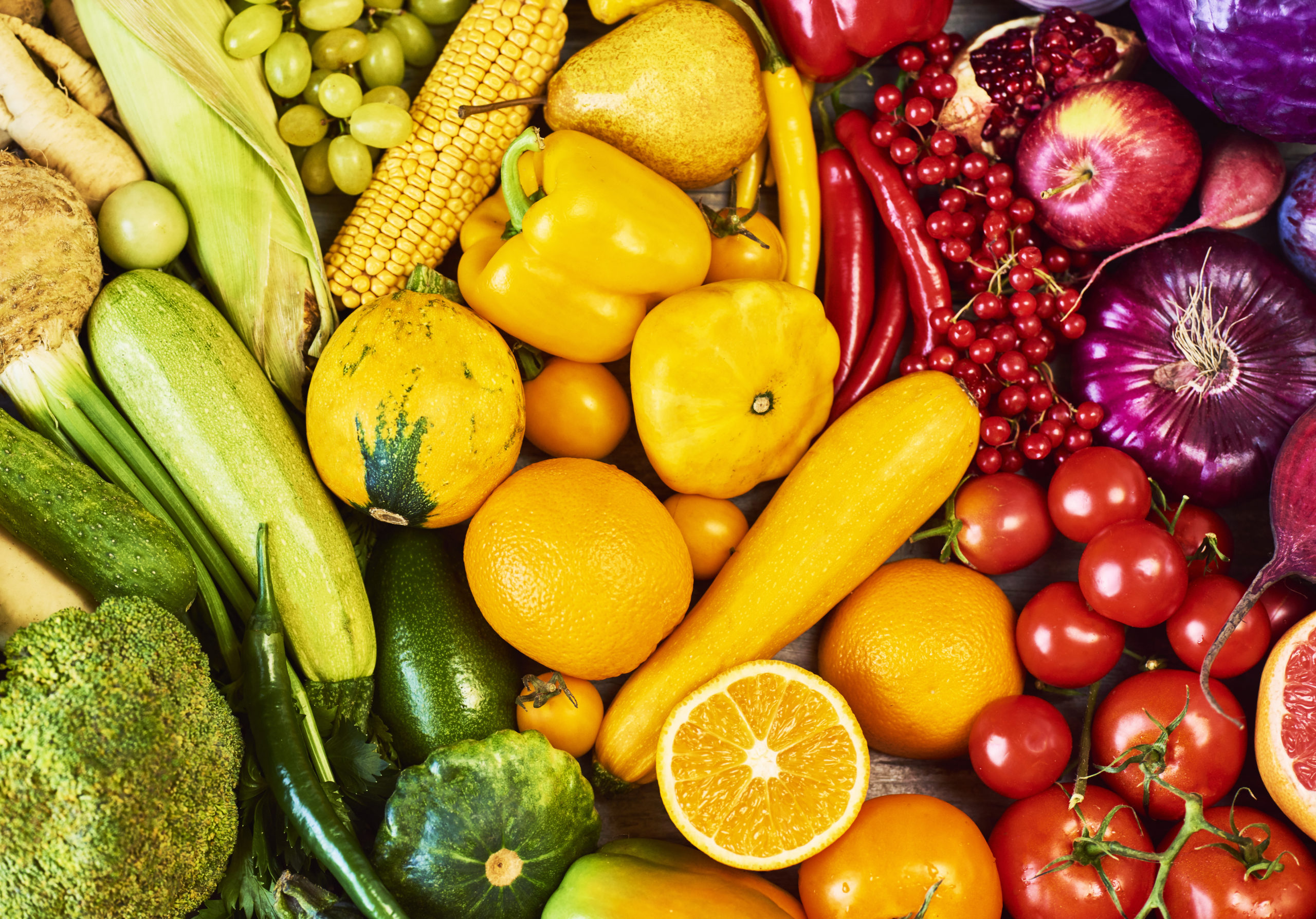They say there is a pot of gold at the end of a rainbow. When it comes to your health and getting all the vitamins and nutrients from the food rainbow, aka a colorful diet, that is definitely the case. If your diet consists of fresh fruits and vegetables full of flavor, antioxidants and more, you have definitely found the pot of gold at the end of that rainbow!
Fruits and vegetables with vibrant colors scream, “eat me”. But, they also scream, “I have vitamins a plenty.” With each color, comes a plethora of different vitamins and nutrients that keep the mind sharp and your body in great shape, in addition to lowering the risk of heat attacks, type 2 diabetes and obesity.
According to a 2015 report by the Centers for Disease Control and Prevention, 13.1% of respondents met fruit intake recommendations and only 8.9% met vegetable recommendations. So, why if the daily recommended consumption of fruits is only 1.5-2.0 cups and only 2-3 cups for vegetables are we just not getting enough? Could it be that we don’t see that pot of gold at the end of the colorful healthy rainbow? What if we changed our mentality and ate our colors, instead of our recommended amounts of this or that?
Red:
Red fruits and vegetables get their red color from lycopene, an antioxidant that helps fight off cancer. They and are full of vitamin A (beta carotene), vitamin C, manganese and fiber. In addition they reduce the risk of type 2 Diabetes and heart disease.
- Red peppers
- Watermelon
- Strawberries
- Raspberries
- Radishes
- Red grapefruit
- Tomatoes
- Red grapes
- Radicchio
- Beets
- Cherries
Orange:
Orange fruits and veggies are great sources of beta-carotene which helps promote healthy vision. In addition, they are full of potassium, vitamin C and are said to lower cholesterol, fight free radicals in the body and support healthy joints.
- Nectarines
- Carrots
- Butternut squash
- Pumpkin
- Oranges
- Sweet potatoes
- Peaches
- Cantaloupe
- Tangerines
- Apricot
- Clementines
- Papaya
Yellow:
Yellow fruits and vegetables are full of vitamin C, carotenoids and bioflavonoids. These vitamins and nutrients will help your heart, digestion and immune system and maintain healthy skin and help with wound healing.
- Lemons
- Sweet corn
- Yellow peppers
- Pineapple
- Spaghetti squash
- Star fruit
Green:
Green vegetables and fruits are full of fiber, folate, vitamin K, iron and calcium. Eating your greens can help with high blood pressure, reduce the risk of obesity and help with mental clarity.
- Broccoli
- Peas
- Green beans
- Avocados
- Grapes
- Brussel sprouts
- Limes
- Kiwi
- Green apples
- Artichokes
- Romaine
- Kale
- Spinach
- Cucumbers
Blue/Purple:
Blue/Purple fruits and Vegetables are loaded with healthy nutrients, including resveratrol, a phytochemical that may terminate cancer cells. They are also full of vitamin C and fiber.
- Purple Figs
- Eggplant
- Purple Potatoes
- Blueberries
- Blackberries
- Cabbage
White:
White veggies and fruits should definitely not be missed. They have glucosinolates, which may have a proactive role against fighting cancer.
- Bananas
- Onion
- White Peaches
- Cauliflower
- Garlic
- Jicama
- Mushrooms
- Coconut
by Nicole Irving

